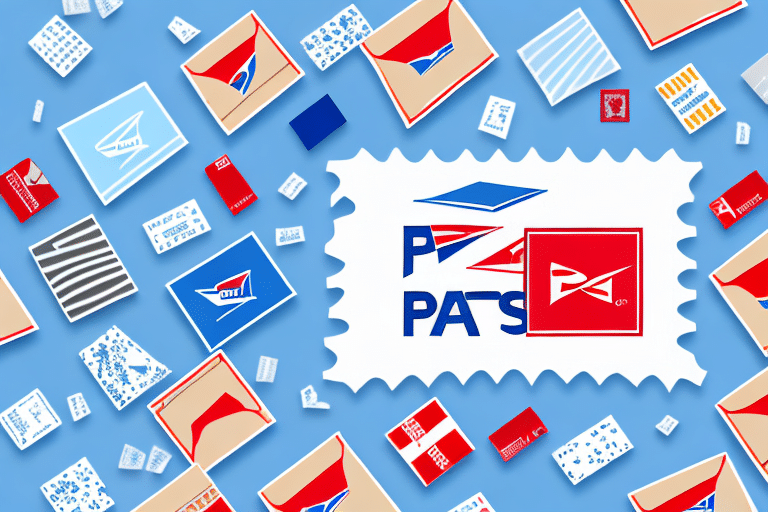Understanding USPS Parcel Post Rates
If you're looking for an affordable way to ship large and heavy items within the United States, USPS Parcel Post might be the perfect option for you. In this article, we'll take a deep dive into everything you need to know about USPS Parcel Post rates, including how the service works, how to calculate rates, and tips for saving money on your shipments.
What is USPS Parcel Post?
USPS Parcel Post is a cost-effective shipping option offered by the United States Postal Service (USPS). It's designed for large and heavy packages (up to 70 pounds) and is ideal for individuals and small businesses aiming to reduce shipping costs. Parcel Post typically delivers packages within 2 to 9 business days, depending on the distance and destination.
One of the key benefits of using USPS Parcel Post is that it includes free tracking and delivery confirmation. This ensures that you can monitor your package's progress and receive notifications upon delivery. Additionally, USPS offers insurance options for Parcel Post shipments, providing added peace of mind for both the sender and the recipient.
How Does USPS Parcel Post Work?
USPS Parcel Post operates primarily through ground transportation, making it a budget-friendly option. Here's a step-by-step overview of how the service functions:
- Package Pickup: USPS will collect your packages from your home or business location.
- Transportation: Packages are transported to the nearest USPS processing and distribution center.
- Sorting: At the distribution center, packages are sorted based on their destination.
- Delivery: Finally, packages are delivered to their respective destinations.
It's important to note that since Parcel Post relies on ground transportation, delivery times are generally longer compared to air-based services. However, for non-urgent shipments, Parcel Post offers significant cost savings.
Furthermore, USPS Parcel Post accommodates packages up to 70 pounds in weight and up to 130 inches in combined length and girth, allowing you to ship larger items without incurring high freight shipping fees.
Comparing USPS Parcel Post with Priority Mail
The primary differences between USPS Parcel Post and Priority Mail lie in their speed and cost:
- Speed: Priority Mail delivers packages within 1 to 3 business days, whereas Parcel Post takes 2 to 9 business days.
- Cost: Priority Mail is more expensive, reflecting its faster delivery times.
In terms of services included, Priority Mail offers up to $50 of insurance and USPS Tracking at no additional cost. Parcel Post provides limited tracking and optional insurance, making it a more economical choice for those who don't require expedited shipping.
Additionally, Priority Mail has a maximum size restriction of 108 inches in combined length and girth, while Parcel Post allows up to 130 inches. This makes Parcel Post more suitable for larger and bulkier items.
Priority Mail also offers various shipping options, including flat-rate boxes, regional rate boxes, and cubic pricing, which can be more cost-effective for certain types of shipments, especially if the package is heavy but compact. Parcel Post, conversely, relies on standard pricing based on weight and distance.
Advantages and Disadvantages of Using USPS Parcel Post
Advantages
- Affordability: Parcel Post is one of the most economical shipping options for large and heavy packages.
- Free Pickup: USPS offers free package pickup, saving you time and transportation costs.
- Reliability: With a delivery success rate of over 98%, Parcel Post is a dependable choice for your shipping needs.
Disadvantages
- Longer Delivery Times: Packages take longer to arrive compared to expedited shipping options.
- Limited Tracking: Tracking information is not as comprehensive, making it harder to monitor your package's exact location.
- No Included Insurance: Standard Parcel Post does not include insurance, potentially risking loss or damage without additional coverage.
Understanding USPS Parcel Post Rates
Several factors influence the rates you pay for USPS Parcel Post shipments:
- Weight: Heavier packages incur higher shipping costs.
- Size: Larger packages, especially those with greater length and girth, are more expensive to ship.
- Distance: Shipping over longer distances increases the rate.
- Service Type: Additional services like insurance or expedited handling may affect the cost.
Another critical factor is the shape of your package. Irregularly shaped packages may be subject to dimensional weight pricing, where rates are based on the package's volume rather than its actual weight. Additionally, shipping hazardous materials can lead to extra fees and stringent restrictions.
How to Calculate USPS Parcel Post Rates
Calculating USPS Parcel Post rates is straightforward using the USPS online calculator. Follow these steps to obtain an accurate quote:
- Visit the USPS Rate Calculator.
- Enter your package's weight, dimensions, and destination ZIP code.
- Select the Parcel Post service to view the available rates.
For businesses, USPS offers bulk shipping discounts, which can result in significant savings. Additionally, if your package fits within USPS Flat Rate boxes, you may benefit from fixed pricing regardless of weight or distance.
Tips to Save on USPS Parcel Post Shipping
Implementing these strategies can help you reduce your USPS Parcel Post shipping costs:
- Use Flat Rate Boxes: If your items fit, flat rate boxes offer predictable pricing regardless of weight or distance.
- Print Shipping Labels Online: Purchasing and printing labels from the USPS website can qualify you for discounted rates.
- Optimize Package Size: Ensure your packages are as compact as possible to avoid higher dimensional weight pricing.
- Ship in Bulk: Consolidate multiple items into a single shipment to take advantage of bulk shipping discounts.
Tracking and Delivery with USPS Parcel Post
USPS Parcel Post provides basic tracking features. You can monitor your package using the USPS tracking tool or the USPS mobile app. While Parcel Post offers status updates, they may not be as frequent or detailed as those provided by expedited services.
Delivery times typically range from 2 to 9 business days, influenced by factors such as distance, weather conditions, and transportation logistics. During peak periods, such as holidays, delivery times may extend beyond the standard window.
For time-sensitive shipments, consider upgrading to USPS Priority Mail or Priority Mail Express, which offer expedited delivery and enhanced tracking features.
Common USPS Parcel Post Issues and Resolutions
While USPS Parcel Post is generally reliable, some common issues may arise:
- Delayed Deliveries: Factors like adverse weather, high shipment volumes, or logistical challenges can cause delays.
- Lost Packages: Although rare, packages may occasionally go missing during transit.
- Damaged Items: Items can sometimes sustain damage despite careful packaging.
To resolve these issues:
- Contact Customer Service: Reach out to USPS customer support for assistance with delays or lost packages.
- File a Claim: If your package is lost or damaged, you can file a claim with USPS for compensation, provided you have purchased additional insurance.
- Ensure Proper Packaging: Use sturdy packaging materials and secure your items well to minimize the risk of damage.
Alternatives to USPS Parcel Post
If USPS Parcel Post doesn't meet your specific shipping needs, consider the following alternatives:
- FedEx: Offers a range of services with varying delivery speeds and tracking options.
- UPS: Provides reliable shipping services with comprehensive tracking and insurance options.
- DHL: Specializes in international shipping with expertise in customs and global logistics.
Additionally, shipping aggregators like ShipStation and Shippo allow you to compare rates and delivery times across multiple carriers, helping you find the most cost-effective and efficient shipping solution for your packages.
For international shipments, specialized carriers such as DHL or International Bridge can offer more affordable rates and better expertise in handling customs regulations compared to standard carriers.
Frequently Asked Questions About USPS Parcel Post
- What is the weight limit for Parcel Post? The weight limit for Parcel Post is 70 pounds.
- What is the size limit for Parcel Post? The maximum size for Parcel Post packages is 130 inches in combined length and girth.
- What is included in Parcel Post shipping? Parcel Post includes delivery to the recipient's address within 2 to 9 business days, limited tracking, and the option to add insurance.
- Can I track my Parcel Post package? Yes, you can track your package using the USPS tracking tool or mobile app, though the tracking details may be limited compared to faster services.
- Are there any restrictions on what I can ship via Parcel Post? Yes, hazardous materials and certain restricted items cannot be shipped via Parcel Post. Always check USPS guidelines before shipping.
Now that you have a comprehensive understanding of USPS Parcel Post rates and services, you can make an informed decision about whether this shipping option aligns with your needs. By evaluating factors such as delivery times, tracking capabilities, and cost, you can ensure your packages arrive safely and efficiently.
Remember, if speed is a priority, exploring USPS Priority Mail or Priority Mail Express might be more suitable alternatives. Always verify the availability of Parcel Post for your recipient's address before finalizing your shipment to avoid any unexpected issues.
Conclusion
USPS Parcel Post offers a cost-effective solution for shipping large and heavy items across the United States. While it may not provide the speed and comprehensive tracking of premium services, its affordability and reliability make it a valuable option for non-urgent shipments. By understanding the factors that influence rates and utilizing money-saving tips, you can optimize your shipping strategy to balance cost and efficiency effectively.






















